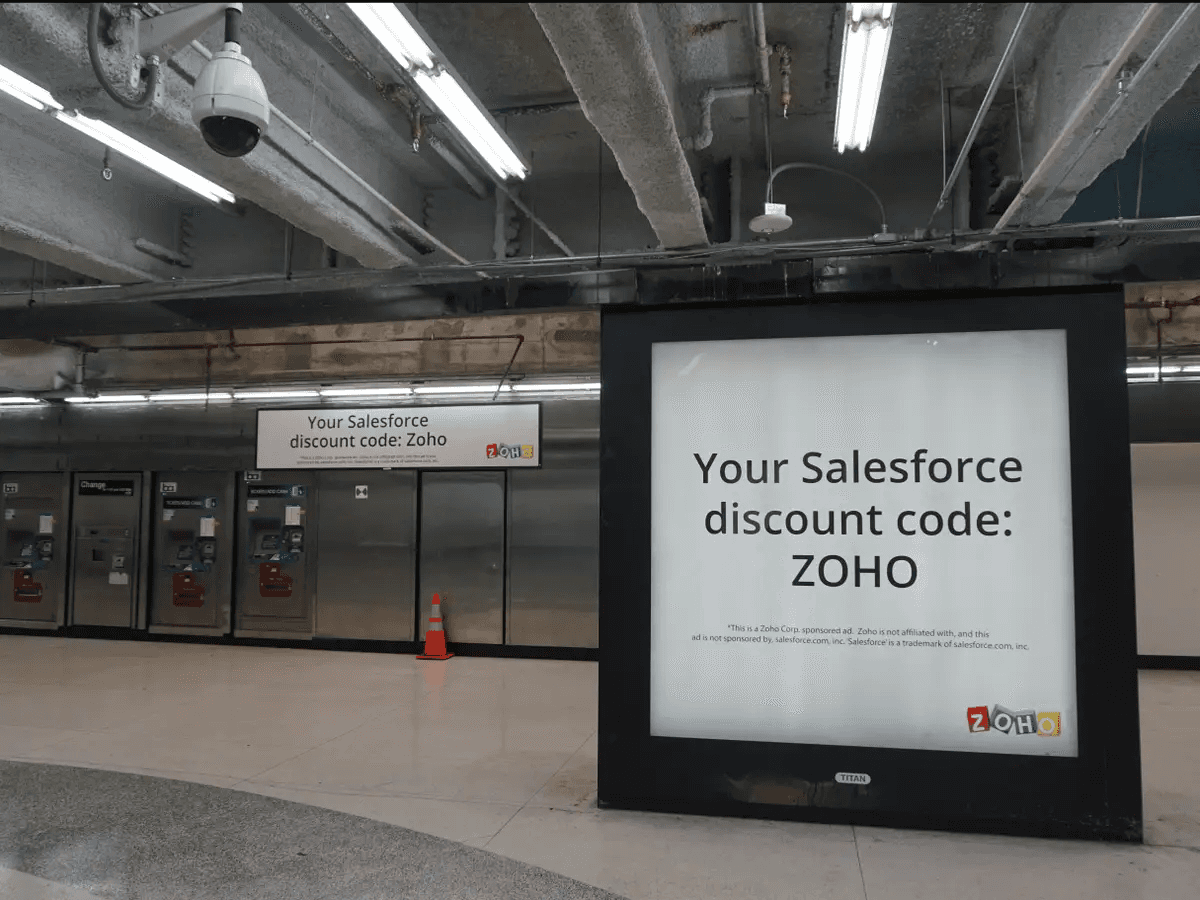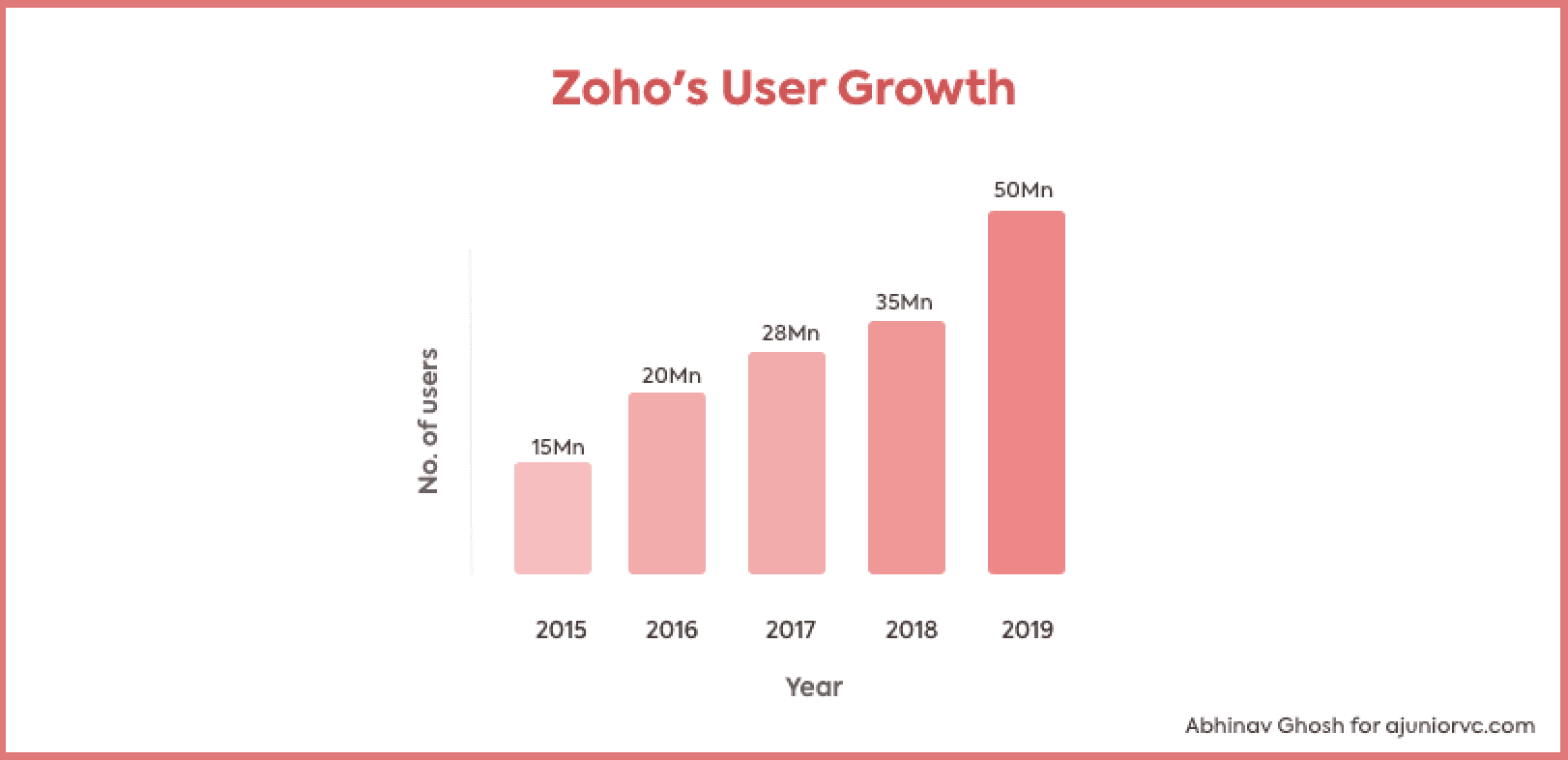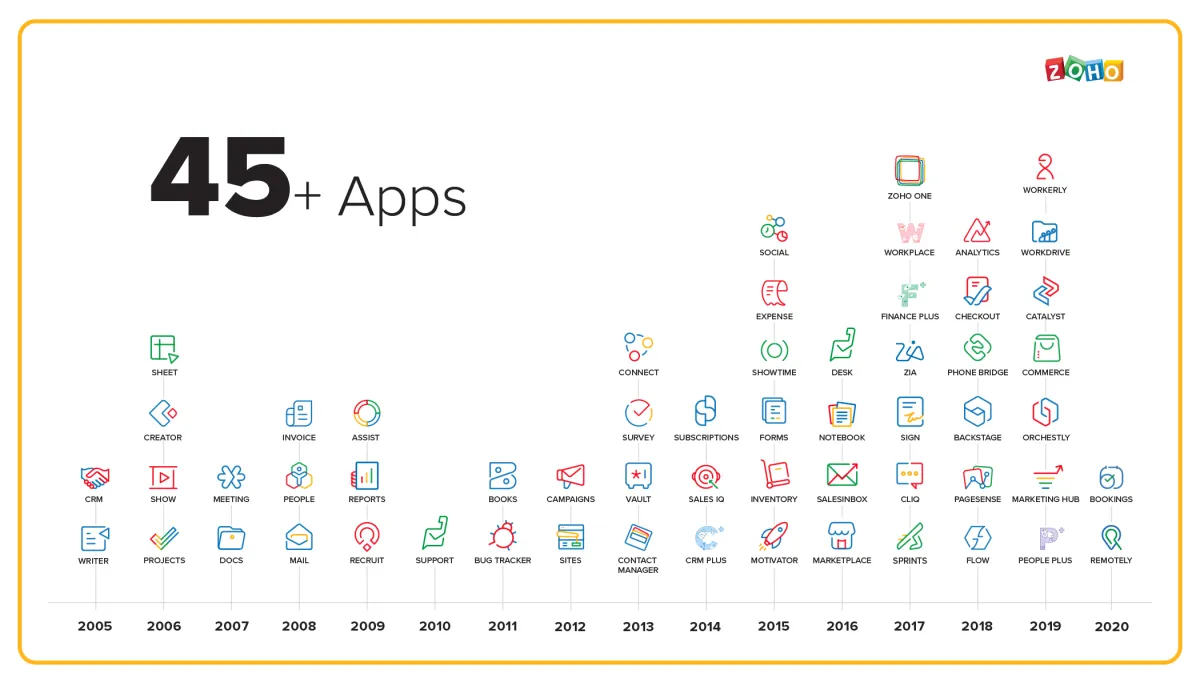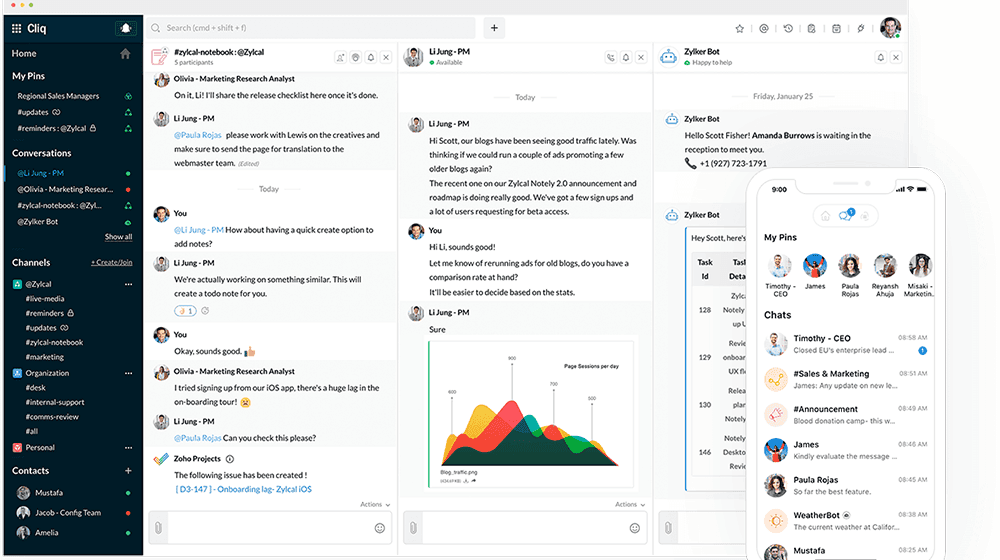Apr 5, 2020
Will Zoho's Software Eat the World?
Profile
SaaS
IPO
B2B
Services
Last fortnight, global SaaS builder Zoho launched an emergency subscription assistance program, providing its app suite for free, after a record year of ~$500MM+ of revenue.
Entrepreneurial Research
Sridhar Vembu was passionate about engineering right from an early age.
Born in the village of Thanjavur, Mr. Vembu always felt that technology could do wonders for humanity. The humble origins combined with this great ambition, and the sky was the limit. He went on to pursue a B.Tech from IIT Madras and a PhD in Electrical Engineering from Princeton University.
Not only was he the first university graduate in his family, but he also went to arguably the most prestigious institutions in the world.
Stuff of dreams for a middle class small town boy.
But he would be hit with a jolt in 1994, just about when he was completing his PhD. With a tough academic market and declining interest in his own field, Mr. Vembu was hit with the feeling of incredible failure.
Picking himself up, he applied to Qualcomm and was soon joined by his brother Kumar.
At his time there, he worked on and developed a strong understanding of wireless communications such as CDMA and power control.
In 1996, after multiple discussions with his brother on starting something, the entrepreneurial bug bit him.
With the feeling of “safety” provided by his earnings at Qualcomm, the brothers were soon very close to taking a leap of faith.
Small cramped rooms, shared spaces or garages, are often the places for origin stories of several software development companies
Something big was brewing.
Prospecting the Problem
Vembu's belief in technology would be reflected over the years in his business building.
At that time enterprise software was riddled with inefficiencies which meant that there was a clear market problem to solve. Along with his brother Mr. Kumar Vembu and partner Mr. Tony Thomas, he started a journey to build something remarkable.
Vembu Software was born.
Mr. Tony with his experience from Lucent Technologies donned the hat of Chairman and CEO while Mr. Sridhar Vembu became its ‘Chief Campaigner’. He became in charge of promotion and marketing of the technology and would be based out of the US.
Coming from a simple middle-class family in Chennai, Vembu infused the same spirit of unwavering determination and resilience into its culture right from the beginning.
The four pillars which formed the bedrock for the company's culture were simply humility, trust, belief and insane ambition. Each of these would be exemplified as the company would grow over the years.
Humility in patiently focusing on creating a stellar product while avoiding the media glare and falling into the pleasure of laurels and pat backs. Trust in hiring the ignored but smart folks who had the drive and ambition but not the ‘name tag’ and laurels from pedigreed institutes.
Belief that it could grow patiently without any IPO or external money. Insane ambition that it would compete with the likes of Microsoft and Oracle one day.
This culture would be combined with a philosophy to use software and build it with a craftsmanship-like approach. While taking this approach, the company would adopt a humane touch while creating software suites and applications.
The Chennai boys would be off to the races.
Preparation for Hardship
Vembu Software started with the Bay Area which was a hotbed for networking companies.
Its first product was a software platform called WebNMS for telecom network equipment makers.
During the initial phase of a startup’s journey it needs one golden client who steers the mothership forward. This anchor provides hope momentum to employees while creating brand equity in the community.
Vembu Software got this when it bagged Cisco. With the product-market fit established, the upstart was flying.
In just four years since inception, the company was generating an annual revenue of $10MM with a per-employee revenue contribution of a whopping $82K.
From having no VC takers in 1996, by 2000, VCs were chasing the company to invest. With an offer for $5MM at a $100MM+ valuation on the table, the valuation frightened the team.
But just as the wings were unfolding and the company was soaring to newer heights, there was a bigger collapse waiting to happen which it would not be immune to.
Zoho would not be immune to the dotcom crash, and it would deeply influence the company’s character.
Going from 150+ customers to 4, taking VC money would have been disastrous at that time. The scarring insight was that the company’s exposure to networking left it extremely exposed to one sector.
VS's diversification would begin in 2001, and become embedded in the company’s ethos.
Picking up the pieces, the young company would expand into markets like China and Japan. Mr. Sridhar Vembu would take over as CEO, Mr. Thomas would leave to start his own company in 2004. Vembu Software would rebrand itself as Advent in 2005, and start a small CRM software.
That small CRM software would be called, as you would guess, Zoho.
Redefining the Approach
By 2007, the company’s punt on software was reaping rich dividends.
Almost ironically, the company was profiled as being run by an unknown Indian entrepreneur the same year. If you want to see consistency exemplified, search for Zoho and you will find a similarly titled article in 2020.
In this decade old interview, the approach remains true even today. Frugality was key, focus was on R&D, it was 1/6th Salesforce’s price.
The company’s revenue, though, was $40MM.
With almost 30% of profits, Salesforce attempted to acquire the company, but was turned down. Zoho’s distaste of the way Salesforce operated would be sown.
As a new entrant with strong competition, Zoho had to differentiate itself by winning the trust of the users. The massive CRM market was highly competitive, and reaching customers in a low cost manner would be difficult.
AdventNet’s Manage Engine would be the Trojan Horse.
Being used by IT departments of mid-market companies, Zoho could upsell the CRM, without high acquisition costs associated.
Being online-oriented right from day 1, the company would use unique strategies to acquire new customers. By making its India base an advantage rather than a handicap, it would pioneer “marketing led” SaaS models.
The pitch would be the extremely low subscription costs/month/user compared to other softwares and free trials. Scaling would be a function of innovation and engineering, rather than marketing for the company.
With Zoho becoming increasingly important to the company’s strategy, AdventNet would become Zoho in 2009. Zoho would end 2010 with a $100MM+ revenue, profitable, and growing.
But why was Zoho becoming so attractive as a business in the first place?
Presenting the Business OS
Zoho’s model was selling software over the internet, or as is now popularly known as SaaS.
In the early 2000s, software would proliferate as being sold in physical copies. Whether it would come pre-installed on your desktop as Windows, or you would be buying it as CDs off the shelf.
It would be by the 2010s that the cloud would really take off and businesses would start going online.
SaaS businesses typically incur costs upfront while they develop and sell the product. The products are hosted on a server and users pay a subscription to use the software for a specified period of time.
SaaS companies can have high LTVs (Lifetime Value) from customers, as the customer can subscribe for months, even years. The business model can therefore afford a high CAC (Customer Acquisition Cost).
In addition to being cheaper to distribute, more profitable over the long term, SaaS solutions also came with another killer feature — regular updates.
As opposed to the software which is delivered through hard mediums unlike in the previous decade, SaaS products could be updated as frequently as weekly.
This not only made the SaaS more up-to-date but also economically as the upfront costs were low—instead of paying several hundred dollars upfront for an office suite, you could now pay as you go and businesses had the flexibility of increasing/decreasing their subscriptions on a monthly basis.
Their fastest growing office productivity suite is built on the catchphrase that ‘Zoho runs on Zoho’.
The "business OS" aims to provide the breadth and depth of products that any small and medium business might require in order to function smoothly, streamlining your organization-wide sales, marketing, customer support, and inventory management functions in a single system.
Zoho would aim to sell the online office suite under the single sign-on offering called Zoho One.
Mr. Vembu believed that the software market will consolidate. Offering a breadth of apps would help Zoho to stay independent. The belief is that software is commoditizing, and it's going to be a more high volume, low margin business.
Zoho unveiled Zoholics, their first day-long user conference, in the US in 2012 to help customers explore their products. The same year they forayed into the Indian market.
The 2014 Made in India Campaign
In 2014, Zoho announced Zoho.in, their free software package for businesses in India under which up to 25 users can get free business-class email accounts in Zoho Mail. It would also launch a Made in India campaign to market to its global consumers.
This would be in addition to offering Indian businesses to register a free .in or .co.in domain and the office productivity suite.
As Zoho continued to grow, the market would become bigger and fiercer.
Negotiating Competition
Zoho’s aim would be to capture a large chunk of the enterprise application market.
With a goal to get to $10 Bn of revenue by 2025, it would still be just ~10% of the overall market.
Their biggest competitor Salesforce dominated the worldwide CRM market with almost a 20% market share.
To combat competition, Zoho would use free signups and lower pricing extremely effectively.
Revisiting our earlier discussion of the value of a high LTV customer for a SaaS business, imagine that the CAC for 5000 ‘free’ customers with an average 50 employees who Zoho doesn’t charge for 3 months is $37M (assuming $50/month/seat for their productivity tools).
For Zoho to make up this cost in 3 years, it would need only 685 of those 5000 customers to convert to Zoho One platform at the cost of $30/seat/month.
If they are able to maintain low churn and keep these customers for 7 years, it would result in $85M of revenue, far above the $37M that they initially lost, clearly justifying the spend while solidifying their positive image in a crowded marketplace.
Almost half of Zoho’s sales would come from small businesses in the US, while European Union and the UK are their other top markets, accounting for over 90% of their overall revenues.
Salesforce, however, remained their biggest competitor, as would be visible in Zoho's blog, Acquire, Acquire, Acquire vs Build, Build, Build.
Zoho would take a dig at "Post-IPO Non-profit" companies and Salesforce’s acquisition hunger. In 2015, it took it a notch further.
Zoho put up ads in train stations around San Francisco targeting industry giant Salesforce, which was not profitable at that stage saying "Dear Salesforce, sorry for your losses."

Enterprise customers who were negotiating with Salesforce were claimed to be given huge discounts if they claimed to be existing Zoho customers. Zoho used this market insight to create guerrilla marketing campaigns during the Dreamforce event.
Unlike others, Zoho has a zero ads policy. None of their products have ads, even the free versions.
Despite the low profile marketing, the company continued to grow.
Closing Rapid Growth
The company's biggest asset in chasing growth, would be human capital.
Investing in human capital at scale is a challenge, and Zoho University, started in 2005, solved for that by ensuring that talent inflow in the company knew exactly what they had to do.
The company invests in talented youngsters, right from the 12th grade. Picking some of them right from villages, they are trained, upskilled and cared for.
As the founder puts it succinctly, "Zoho hires forever"
The company would close FY16 at INR 1,756 Cr of revenue, and follow up FY17 with INR 1,982 Cr. While it would lose profitability in 2017, it would be a sign of investments in the future.
The next two years would be a tear.
It would grow 20% in FY18 to reach a revenue of INR 2,412 Cr. It would follow up with 37% growth in FY19, a blockbuster year where it reached INR 3,307 Cr. It would even grow profits by 26%, reaching upwards of INR 500 Cr.
But the growth would be driven by an increase in marketing spend, a departure from its earlier approach.
It also almost doubled its advertising spends INR Rs 1,122 crore, which is about 44% of its total expenditure. This would be very close to 46% of Salesforce's expenditure, a sign that Zoho too would need to up the game to beat Salesforce.
By 2019, Zoho had over 55 apps with over 50MM users, driven largely by its product led approach.

But how would the business scale without VCs investing into it?
Following Up with Profitability
"I am in business to run a business, not to run away from it” - said Vembu, in his much anticipated reply to why Zoho never raised money.
He puts it through in a simple analogy. Business is not about overthinking such things, and one could take inspiration from the chaiwala or coconut seller right outside.
Niche market segments and repeat customers ensured cash flow, and thus sustainability during the early days while building Zoho (AdventNet)’s first product - Manage Engine, which scaled to $10MM in revenue in 2000.
There was more to the story and it lay right in the part where we started, Research and Development.
Most startups utilise funds across hiring, marketing and CAC during the initial 0 to 1 phase. But Zoho didn’t have to spend on ‘building a habit’, or either breaking an old one by targeting users who would have already used similar interfaces before.
All they had to do was to make enterprise software that worked well at scale, as they moved up market from midsize to large orgs.
Understanding that product is the core of SaaS, Zoho would employ more than 50% of its talent across the organisation in engineering, creating capabilities to always ‘ship’ faster and better than any other competitor.
Through this, they want to enable small & medium businesses to manage almost 80% of their operational tasks through Zoho’s suite of products.

The staffing ratio hitting the right chord would couple itself up with the “build in India, sell to the world”.
As we had talked about earlier, always ensuring that Zoho didn’t have to rethink, or pivot. As luck would have it, the market and spending on CRM grew massively by 15.6% to $48.2B, showing only signs of the pie getting bigger.
The basis of bootstrapping was freedom - the ability to try out new ideas, fail, learn and repeat.
Zoho culture would put more emphasis on being independent, rather than answering the board questions on where the money was put into and justifying it. The company never intends go public, or even be acquired - just explore the freedom of trying out new things sustainably.
By early 2020, Zoho would have 300K paying businesses, taking its market share to 4%+.
Upselling the Future
Since Zoho’s founding their goal has been to stay fanatic about customer satisfaction.
“The feedback loop must be continuous”, as Vembu says, and this could be one of the biggest reasons for their continued success.
The company prides itself on being able to provide a more comprehensive set of business tools to companies around the world, with some of their customers running “80% of their business on Zoho”.
But today, Zoho’s top priority is preparing current and new customers for the battle against COVID-19.
Already in some ways a remote operation with majority of their operations and employees based in Chennai despite serving clients around the US and Europe, Zoho recently launched Remotely, a suite of cloud applications specifically aimed at helping teams that are working from home.
With COVID-19 in mind, the company is making Zoho Remotely available free of charge to anyone who needs remote working tools in light of coronavirus precautions.
With a suite of services that unites Slack, Zoom and MS Office, Remotely is made up of 11 tools categorized as Communication, Collaboration, Remote Assistance and Productivity.
The beauty of their solution, and perhaps what is driving their success, is the interoperability of their different offerings that a single subscription offers.

As of March 2020, 1/3rd of the world’s population is under some form of ‘lockdown’. While the top priority for everyone is staying safe and healthy, businesses need to operate no matter what the environment.
The 11 apps in Remotely will be available for free until July 1, 2020, with the hope that the virus will be under control by then. However, Zoho says it will easily extend the offer if necessary.
Furthermore, Zoho is providing its users with the full edition of its software suite rather than the more basic freemium version. The company has launched the Small Business Emergency Subscription Assistance Program (ESAP), which will help primarily the 20,000 Zoho clients that are small- to medium-sized businesses (SMBs) with 25 employees or less.
In just two weeks, more than 5,000 new companies are running on the platform, and that number is increasing every day. For instance, Zoho is witnessing 500 percent growth in use of its collaboration apps and 1,000 percent growth in daily new users of Zoho Meeting.
This strategy, while benevolent on the surface, is also a good business decision for Zoho.
The company is leaving money on the table intentionally, because it knows that a dead customer pays nothing and a saved customer might end up being extremely loyal.
We also believe there could be some interesting fallouts from the services that have become a requirement in the work-from-home era. As we discussed a couple of weeks ago, ed-tech and online learning is experiencing a renaissance.
Zoho’s service Showtime is a training solution with real-time engagement using learner-centric features. By bringing together experts, teachers, managers, and other resources together, Showtime can put them all in one place as co-trainers/presenters.
During and after the COVID-19 pandemic, these tools could represent Zoho’s entry into vertically customized solutions (software for schools) or different product lines like interactive learning.
Staying close to their roots of uplifting the neediest, Zoho’s mission to grow local economies and build “strong value-based relationships with people willing to work towards a common goal” will be tested in trying times.
Zoho is clearly facing some major global competition in the form of Salesforce and Microsoft, but they’ve shown that they have the attitude of a champion and the hustle of an underdog.
Getting closer to the $1Bn of subscription revenue run rate, there are few Indian technology startups that could compare.
Profitable SaaS companies are valued at anywhere between 10-15x revenue, and Zoho could easily be worth $10-$15Bn. With the enduring nature of Zoho visible in this downturn, it could be the dark horse emerging out of India's ecosystem.
Staying true to its ethos of building for businesses, Zoho's software could eat the world.
Written by: Abhinav, Keshav, Rohan, Shiraz and Aviral